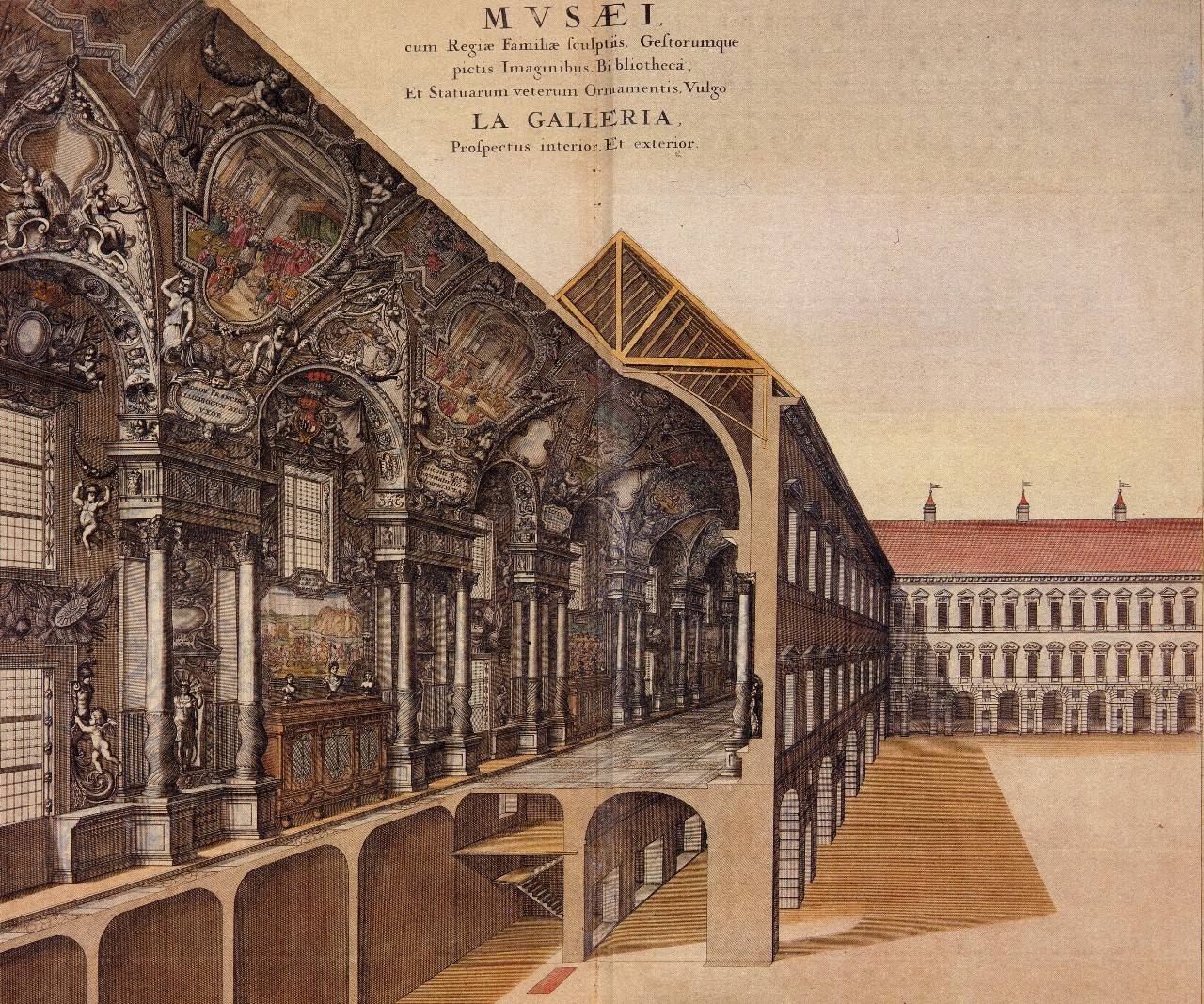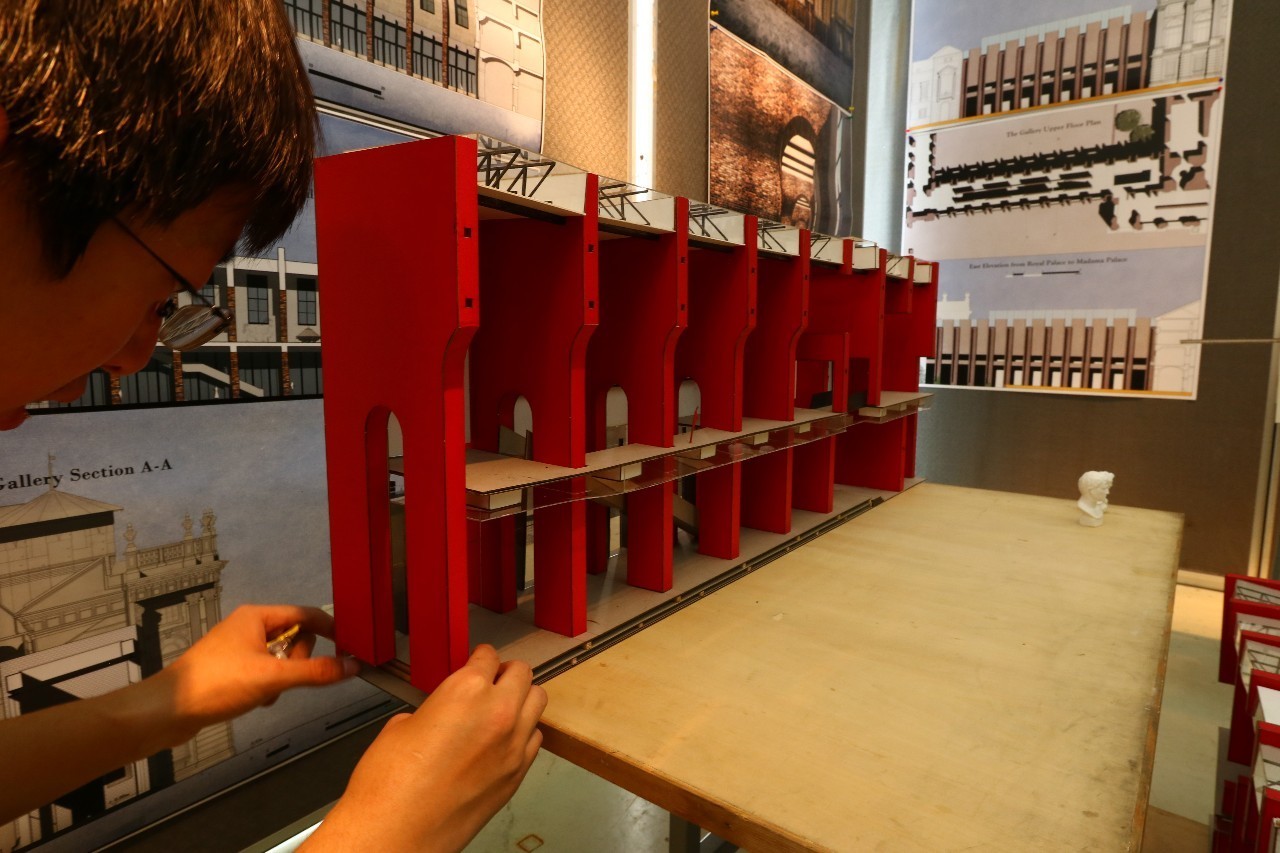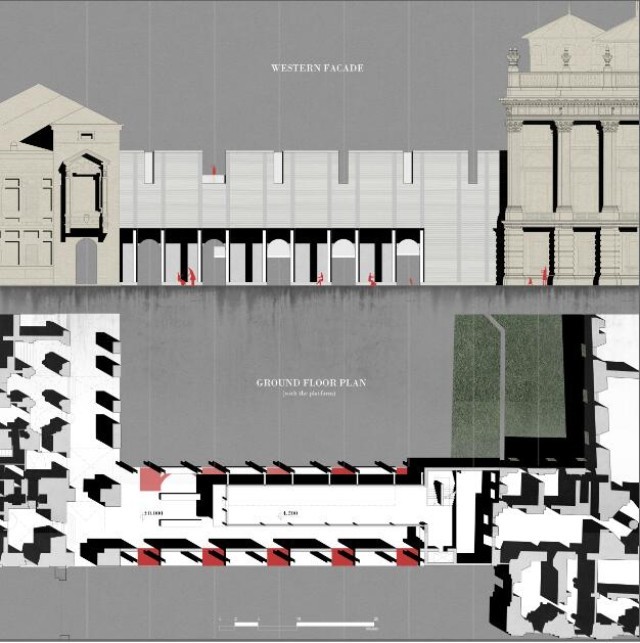
教案设计:
Marco Trisciuoglio, 吴锦绣,姜清玉
指导教师:
Marco Trisciuoglio, 吴锦绣,姜清玉
助教:
宋文颖
参加学生:
东南大学建筑学院4年级本科生:16人
出题背景:
随着中国城市化进程的不断深入,中国的城市建设正在经历着由大量新建到重视旧城和旧建筑更新的转变,如何有效地通过旧建筑的保护再利用实现城市的复兴与发展是当前建筑学界所面临的重要问题。
本课题是在东南大学完成的一个关于欧洲城市本身的课题,意在探讨欧洲建筑空间、历史建筑,及其被设计和建造的自身规律。基于东南大学和都灵理工大学多年对于历史建筑保护更新的研究积累,本次联合教学我们选择了都灵城市中心的国王宫与王后宫进行加建设计,希望通过研究和设计织补城市结构,复兴周边城市空间。
课程概要:
都灵是意大利北部的一个城市,古罗马时代初建,并且经历了大规模的城市扩张。在十七世纪和十八世纪初的巴洛克时期作为萨伏依公国的都城;继而在十九世纪末成为意大利的第一个首都城市。我们的场地位于这座城市历史上的中心广场区域,有许多古代遗迹存留,如都灵中世纪城堡(最初是作为阿卡加王子的王宫,随后成为玛达玛王后宫)与国王宫及其加建部分。
Turin is a city in Northern Italy, founded by ancient Romans. It have had a great urban development, first ascapital of the Duchy of Savoy in the Baroque period (XVIIth and beginning of XVIIIth century) and later in the late XIXth century, as the first capital of a new European State, the Kingdom of Italy. We worked on the historical centralsquare of that city, full of ancient monuments like the medieval castle of Turin (known as palace of Acaja’s Princes, later Palazzo Madama) and the Royal Palace and its annexes.

这两座王室宫殿曾凭借祖卡洛廊来连接。它建于约1606或1607年,但在1667年毁于一场大火并且再未被重建(除去1997年曾有过的临时加建)。连廊有三十二个拱券,窗间壁画描绘出当时的历史面貌,诸如星座研究和已知的一些动物,同时连廊内也储藏了许多雕塑、书和手稿。
These two noble palaces were once linked by a connecting building, the so-called Zuccaro Gallery. It was built between 1606 and 1607 and it was destroyed in a fire in 1667 and never rebuilt (exceptas a temporary installation in 1997). The Gallery (officially called “Museo”) was composed of thirty-two arcades, the frescoes between the windows depict a sortof history of the world, including the constellations and all known animals.The gallery housed statues, books and manuscripts, too.

这次设计意在用一种现代的语言重建这条将作为放置和展览达芬奇作品的连廊。因此,学生们在此之前必须去研究它的历史和都灵的城市形态,甚至需要重新绘制广场周边的建筑。来自都灵理工大学、中国东南大学和南京理工大学的教授们通力合作,将意大利的建筑设计方法同中国的设计教学方法结合起来。
The main idea of my studio was there construction, with a contemporary language, of the missing building nowadays,as a museum(hosting and exhibition of Leonardo’s machines). To do that thestudents have had to study the history of the Galleria and the urban form of Turin,even re-drawing the surrounding buildings in the historical square. The frequent exchange of views with my SEU colleagues was very precious, to combine the Italian approach to the architectural design and the Chinese approach todesign teaching.
教学过程:
在课题初期,这一主题似乎将东南大学的四年级学生带入了一个文化背景与设计理念都全然不同的语境中。而在课题的后期我们发现,把对西方城市的讲解与设计经验以及中国城市的体验相结合,可以使得这种对比更具真正的价值。正如罗兰·巴瑟在《帝国的叹息》中所说,对日本的研究同时加深了对法国的理解。当两种不同的文化相对时,一种正如另一种的映像,不断的相互质疑更能加深对彼此的理解。
It seemedto me, at the beginning, like a way to involve my Nanjing bachelor students infacing at once different problems into a different culture and a differentpoint of view towards architectural design. It has been for me, at the end, adiscovery: combining my western lectures and design experiments with long walksin Chinese cities, made me understand the real value of the comparison.
In fact,drawing the map of Nanjing during my walks, helped me in better describing and understandingTorino, the Italian city where I live.RolandBarthes was right, when he wrote “The Empire of Signs”(1970): studying Japanmeans understanding France. Like in a mirror, two different cultures canunderstand better each other, if they never stop putting questions each other.



在设计之初,学生需要去构想和还原这条遗失的连廊,去探究在两座王宫中需要被保留和联系起来的一些建筑要素,连廊在此被当作一种类型来研究。然后设计者要在此基础上进行新的连廊的设计。
最终一共产生了五个方案。第一个方案以建构性为基础,环绕中部具有纪念性的狭长楼梯展开,顶部是一个巨大透明的盒子(希望在夜间成为一个巨大的灯箱)。第二个方案选用木材和钢材去构建凭借柱子和拱廊支撑的盒子似的体量。第三个方案基于“瞭望塔”的概念,试图打开面向城市景观的视野,在此之上去组织良好的展陈空间。第四个方案重点展现平行的片墙的结构表现力,试图去构建一个类似于古罗马博物馆的展览空间。第五个方案则展示出对连廊原型的重新解读,对内部空间探求更多。
The students made first an exercise to imagine a conjectural reconstruction of the missing building, then they recognized the architectural elements of the two palaces to be remained and connected and they studied the Galleria as a type.
The final results are five projects. One, based on the idea of tectonic, has been organized around a monumental and long stairs with a big and transparent cubic roof (ready to become like a giant lamp in the night). Another one chooses wood and steelto build a “box” volume, borne by columns andarches. There is a project grounded on the idea of a “watch tower”, that allows to better organize the exhibition’s spaces, opening the views towards the urban landscape. Another project plays with the structural power of several parallel walls to build something like a strong and ancient Roman museum. The last one describes a new reading of the Galleria, trying to pay a great attention to the internal space.









在建筑表现上我们借鉴了意大利坦丹萨学派的风格,这能更好地阐释建筑作为被建造的存在,同时(通过绘制和使用阴影和水彩基调)也帮助我们以一种更具历史感的方式去呈现建筑。
在最后,学生们都很好地实现了这次设计的意图,即对于西方建筑的新的认知。
We worked a lot in the projects’ representation, looking at the style of the Italian “Tendenza”, that better gives the idea ofthe architecture “as a built event” and that better recovers the historical wayto show architecture (with use of shadows and watercolours’ tones).
Finally the goal of a new awareness of the western architecture by students was fully reached.



